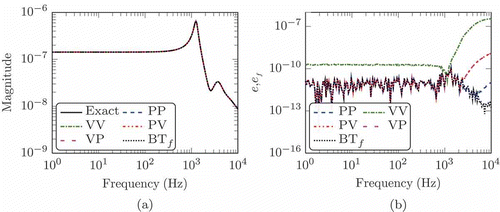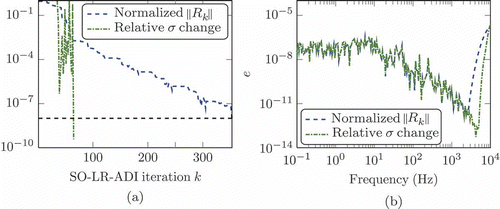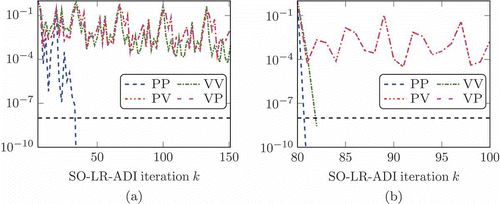Figures & data
Table 1. Left and right transformation matrices of balanced truncation for second-order systems.
Table
Table
Table 2. Specifications of the used examples as well as parameters and results of the SO-LR-ADI runs. All timings are given in seconds.
Figure 1. Reduction results for the Bernoulli beam model resulting from the residual based stopping criterion. (a) Bode plot. (b) Relative error.

Table 3. Largest relative errors of the reduced order models resulting from residual and singular value-based termination of SO-LR-ADI.

